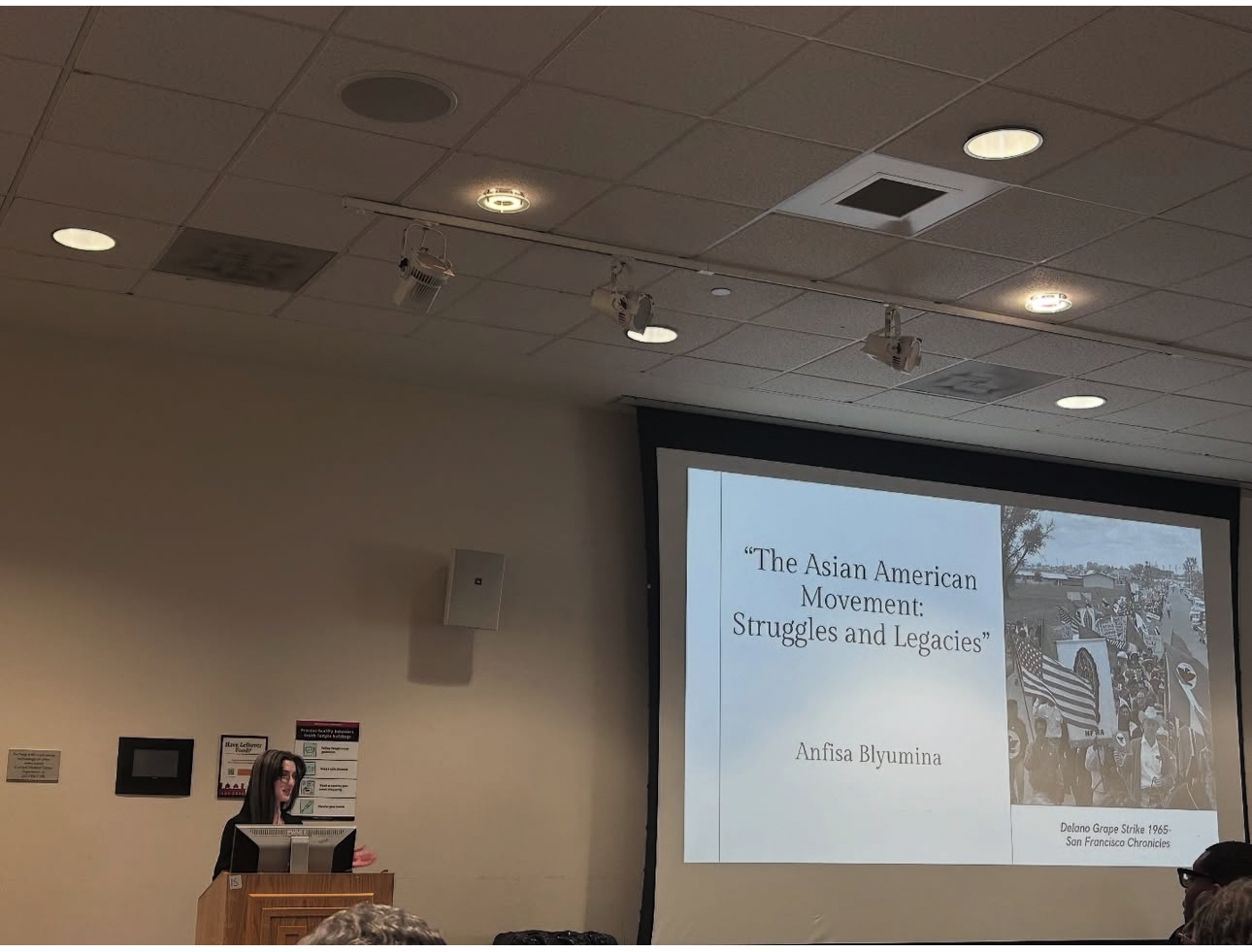Each year, Temple University hosts the Symposium for Undergraduate Research and Creativity, where undergraduate students can enter to speak about their research in front of faculty, peers, family and friends. Through its emphasis on original research and creative work, the Symposium seeks to inspire undergraduate students to analyze, critique, and engage with the world around them.
This year’s symposium, held on April 10, featured more than 150 entries. Klein held 26 of those slots, presenting on topics that ranged from social movements to women’s rights and mental health.
“This was Klein’s largest showing at the symposium since we began participating in 2005,” said Scott Gratson, program director of communication studies and director of undergraduate studies at Klein College. “The diversity in majors and the strength of research topics, guided by Klein faculty, was the most I’ve ever seen. I’m truly proud of our students and their commitment to undergraduate research.”
The following student projects highlight the range of research topics Klein students explored and presented at this year’s symposium.
Anjola Adegbite, Senior, Media Studies and Production Major
“Lessons from my first film”
Session: Lessons Learned: An Application of Communication to Advocacy and Practice
Anjola Adegbite’s research idea came from interning in Barcelona, Spain in the summer of 2023. She had some free time and was inspired to write a script for a film titled “All My Heroes Were Mentally Ill.” Adegbite explored artists who died following struggles with mental health.
About a year ago, she decided to submit her project and findings to The Creative Arts, Research and Scholarship (CARAS) Program. This grant provides undergraduate students financial support for their research and creative projects. To receive this grant, Adegbite would also need to present her findings at the symposium.
At the symposium, Adegbite illuminated the challenges she faced during the film process.
“My findings will contribute to the broader field of Media Production, and filmmaking in the sense of really challenging yourself,” said Adegbite. “Using the knowledge, you know now or are learning while you’re in school to make the best work you can and not wait for the perfect moment or after graduation.”
Anfisa Blyumina, Senior, Communication and Social Influence Major
Research: “The Asian American Movement: Struggles and Legacies”
Session: Shaking the Ground: Communication and Media to Progress
Anfisa Blyumina was in Jason Del Gandio, associate professor of instruction, class “Resistance, Protests, and Social Movements,” where the idea of the Asian American Movement project originated for a final course research assignment. Once she finished it, Blyumina felt proud of her work, but didn’t feel like it was suitable to submit for the symposium. However, Gandio encouraged Blyumina to fill out the application.
The purpose of her research was to explore the movement within American history and activism in general. Additionally, she drew inspirations from the movement into her own personal life and activism.
"By challenging racial discrimination, economic exploitation, and political marginalization, the movement played a pivotal role in reshaping the national conversation on race and inequality,” said Blyumina. “It provided a platform for Asian Americans to unite across ethnic lines, amplify their voices, and assert their rights in the face of long-standing exclusion and prejudice.”
Nate Ransom, Sophomore Advertising Major
“Digital Dependency: Understanding Doomscrolling in Generation Z”
Session: Exploration and Reflection of the Self in/through/with Media
While in a class with Dana Saewitz, associate professor of instruction, Nate Ransom landed on wanting to understand the concept of “doomscrolling” and understand how it was affecting Temple students.
Although it was a final project, Saewitz encouraged Ransom to apply for the symposium. Ransom’s findings show the correlation between time spent on a student’s phone and their mental health.
“My findings show the impact of excessive social media usage and draw attention to the extreme number of college students who are unhappy with the amount of time they spend on social media,” said Ransom.

